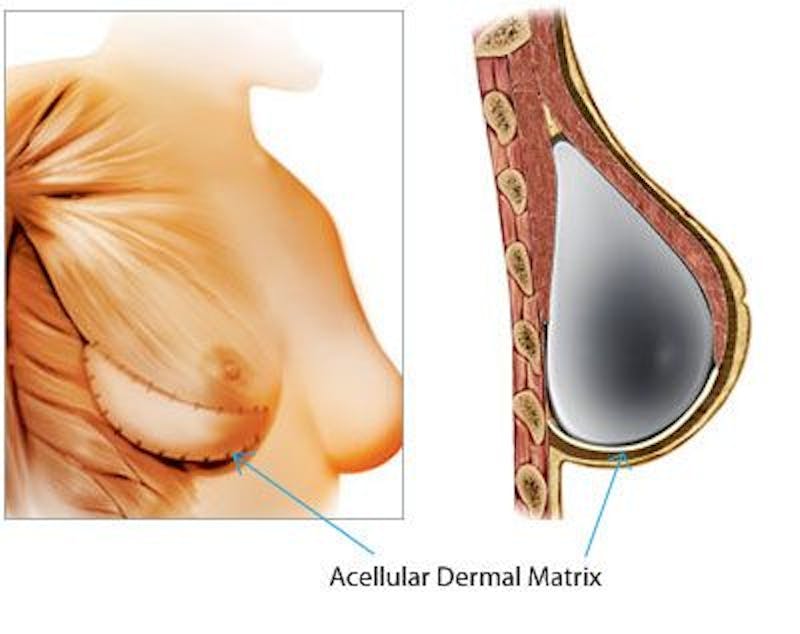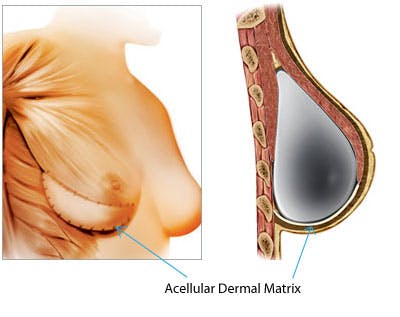
The human body has a remarkable ability to heal itself, say from a cut or a burn. However, if the damage is too great sometimes the body needs a helping hand to repair areas of weakness. A tissue matrix or mesh implant may be needed to provide support or scaffolding for new tissue growth. Once inserted, your own skin cells have something to grab onto.

There are four types of material that mesh can be made from; human cadaver, pigskin, synthetic mesh, and the latest, silk. All are FDA-approved and safe. Anyone may be recommended if you have any of the following challenges with your breast implants.
- Bottoming out – This phrase refers to breast implants that hang down from the original pocket resulting in more fullness below the level of the nipple than in the upper pole. Tissue matrix is needed to support a new implant if re-augmentation is chosen.
- Fold malposition – Referring to the inframammary fold or inferior landmark of the breast, affecting one or both breasts. Tissue matrix will provide strength in case of re-positioning.’
- Synmastia – Also called uniboob or breadloafing, the breasts appear as one, most often because of over-dissection of the pocket in the region of the cleavage during surgery. New pockets must be constructed to hold the implants in a more lateral and correct position. Tissue matrix provides the structure of the corrected pocket.
- Implant Wrinkling & Rippling – This occurs in patients with very thin skin or breast tissue where the wrinkling and rippling of the fluid filled implant are visible. Mesh will give an extra layer of covering to the implant helping to hide any ripples from being visible.
- Mastopexy Augmentation – When the breasts droop or overlap the inframammary fold, this is referred to as ptosis. Ptosis is caused by gravity over time or if implants too large for the patient’s natural anatomy have been implanted. Tissue matrix is used to provide strength and support to surgically lifted breasts, even more, if the patient chooses breast augmentation to breast lift surgery.
- Capsular Contracture – Tissue matrix is very resistant to capsular contracture and therefore greatly reduces the risk of recurrent contracture and implant displacement.
Dermal tissue matrix is not inexpensive, but invaluable when it comes to restoring inframammary fold definition, natural-looking ptosis, symmetry, and more stable implant position. Dr. Gilbert Lee at Changes Plastic Surgery has performed dozens of breast revision procedures using tissue matrix. He has experience with Acellular Dermal Matrix, Strattice, TIGR Matrix, and the newly introduced Seri Surgical Scaffold. Schedule a consultation to find out if tissue matrix can improve the appearance of your breasts.
Copyright 2014 Jill Darrah for Changes Plastic Surgery & Spa.

